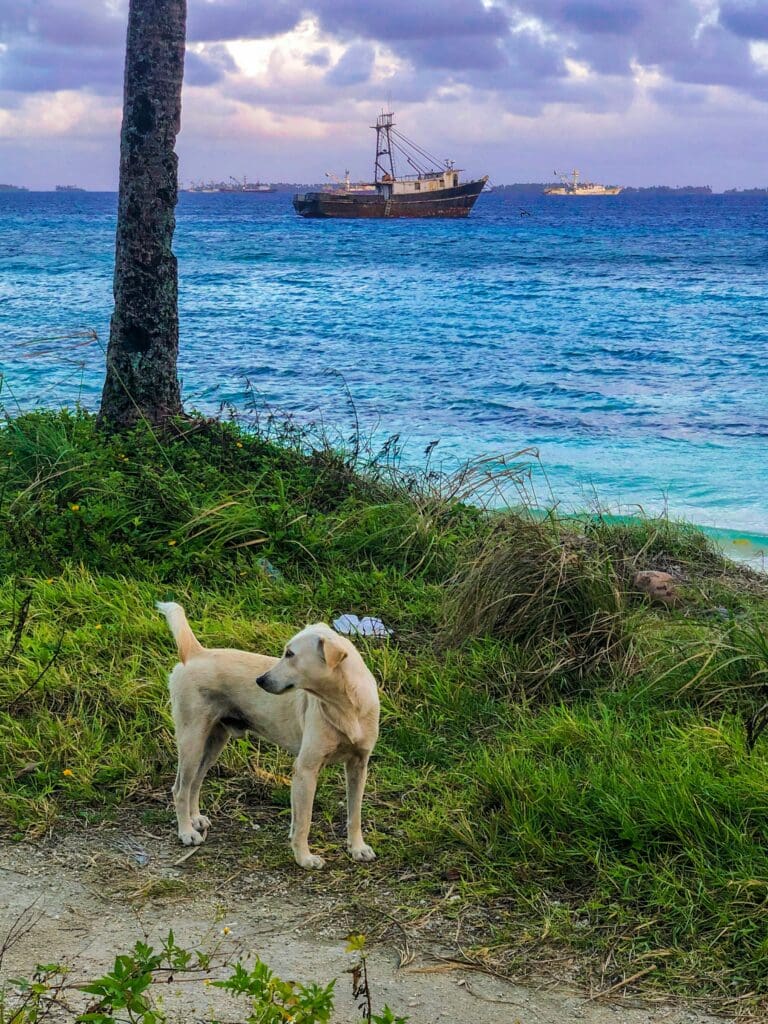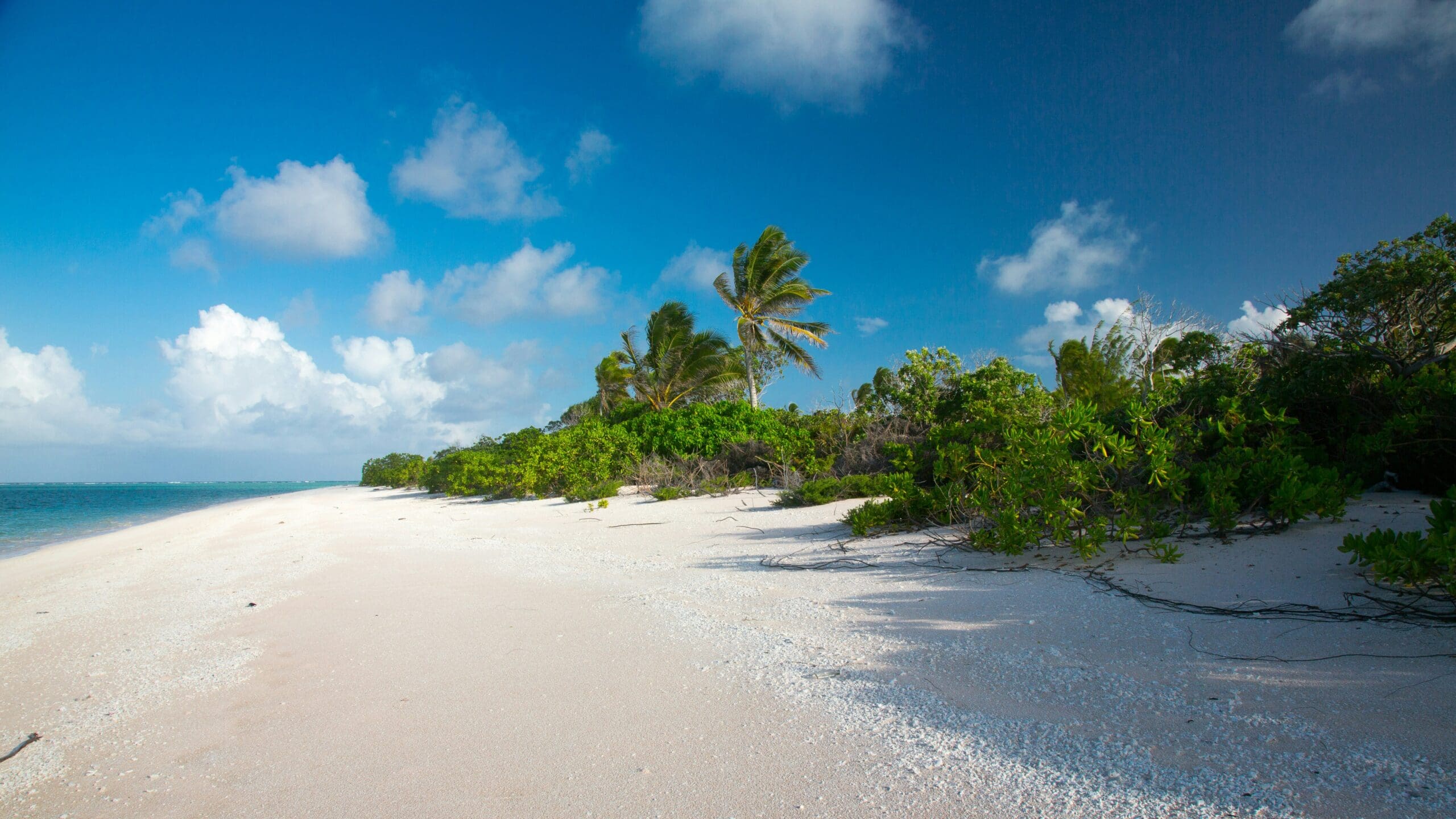Marshall Islands
Country Name: Republic of the Marshall Islands
Capital City: Majuro
Population: Approximately 60,000 (2024 est.)
Official Languages: Marshallese, English
Currency: United States Dollar (USD)
Time Zone: Marshall Islands Time (MHT), UTC +12




Diving Overview
The Marshall Islands offer unique diving experiences in the Pacific, with its clear waters, vibrant coral reefs, and diverse marine life. The country’s remote location and rich underwater ecosystems make it an enticing destination for divers seeking adventure and beauty.
- Number of Dive Sites: Over 100
- Types of Diving: Reef, wreck, drift, and wall diving.
- Marine Biodiversity Highlights: Turtles, rays, sharks, various species of tropical fish, and vibrant coral reefs.
- Average Water Temperatures: 28-30°C (82-86°F)
- Visibility Range: 15-30 meters (49-98 feet)
Important Information
Optimal Dive Seasons
The best diving conditions in the Marshall Islands are typically from December to April, when the waters are calm and visibility is excellent.
Major Airports
Marshall Islands International Airport (Majuro), Kwajalein Atoll (Kwajalein), and other regional airfields.
The Travel Tip
A 3mm wetsuit is generally sufficient for diving in the Marshall Islands’ warm waters, but consider a thicker suit if diving in deeper or cooler areas.
Weather Patterns
The Marshall Islands have a tropical climate with consistent temperatures year-round. Expect warm and humid conditions with occasional rainfall, particularly from June to October.
Internal Transportation
Options include domestic flights, ferries, and taxis, which provide connectivity between the islands and key locations.
Attractions
Major attractions include the beautiful coral reefs, vibrant marine life, and historical sites on various atolls such as Kwajalein and Majuro.
Top Dive Regions
The Marshall Islands offer some of the most pristine and remote diving experiences in the Pacific Ocean, with its clear waters and diverse marine life. Kwajalein Atoll is renowned for its vibrant coral reefs and abundant marine species, making it ideal for both novice and experienced divers. Majuro Atoll combines beautiful lagoons with a variety of marine life, offering exciting underwater adventures close to the island’s cultural and historical sites. Arno Atoll, located further from the main islands, is famous for its untouched coral gardens and opportunities for encountering large pelagic species. Lastly, Majuro Lagoon is a popular dive site known for its shipwrecks and diverse marine ecosystems, providing thrilling dives for all levels. These top dive sites highlight the Marshall Islands’ unique marine environments and their appeal as a premier diving destination.

Kwajalein Atoll
Known for its vibrant coral reefs and abundant marine life, making it ideal for both beginner and advanced divers.

Majuro Atoll
Combines beautiful lagoons with a variety of marine life, offering exciting underwater adventures close to cultural and historical sites.

Arno Atoll
Located further from the main islands, it is famous for its untouched coral gardens and opportunities for encountering large pelagic species.

Majuro Lagoon
A popular dive site known for its shipwrecks and diverse marine ecosystems, providing thrilling dives for all levels.
Marine Life
The Marshall Islands’ marine environments, scattered across the central Pacific Ocean, are known for their stunning underwater biodiversity. The atolls and lagoons, particularly around Kwajalein and Majuro, are rich with vibrant coral reefs, diverse fish species, and an array of marine life. Kwajalein Atoll is renowned for its clear waters and thriving coral gardens, while Majuro Atoll offers beautiful lagoons and shipwrecks that are popular among divers. Arno Atoll, located further from the main islands, is known for its pristine coral reefs and opportunities to encounter larger pelagic species. These unique marine ecosystems are supported by nutrient-rich waters, making the Marshall Islands a premier destination for underwater exploration and marine biodiversity.
Common Species: Reef sharks, manta rays, eagle rays, barracudas, tropical fish, moray eels, and various species of nudibranchs.
Seasonal Highlights: The best time to visit for whale shark sightings is typically from June to September. For diving with manta rays and witnessing vibrant coral spawning, plan your trip around the full moon periods and the warmest months, which are generally from April to October.
-
Unlock WWII Secrets: Epic Dive Adventures at Bikini Atoll
For both the world history and scuba diving, the remote Bikini Atoll located in the Marshall Islands is one of a kind. Popular for being the center of atomic testing during the mid-twentieth century, nowadays this place is highly esteemed…



